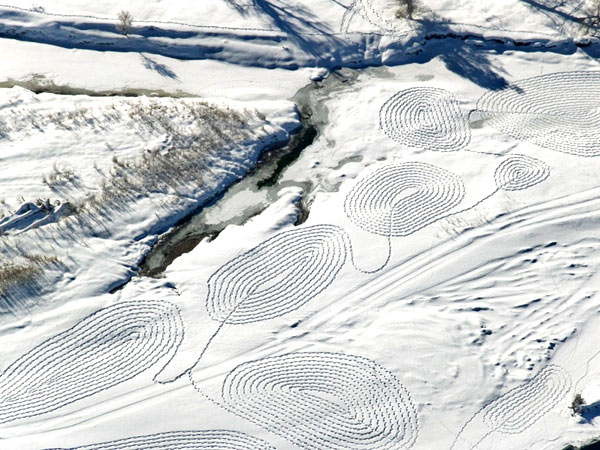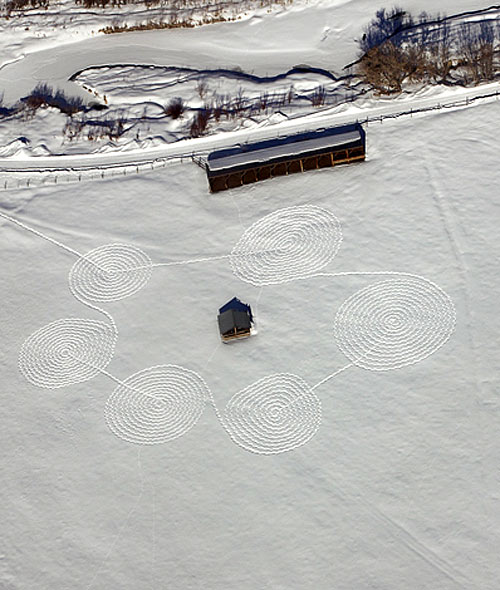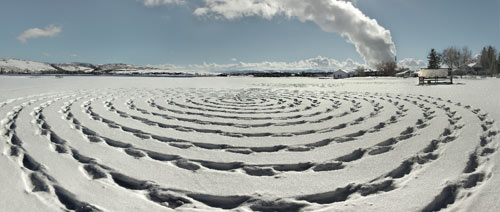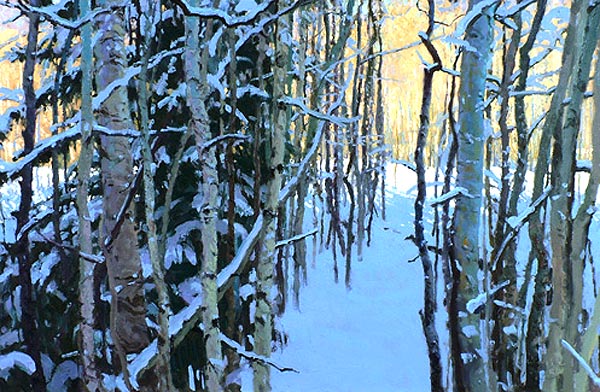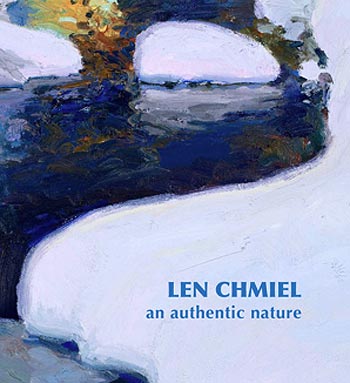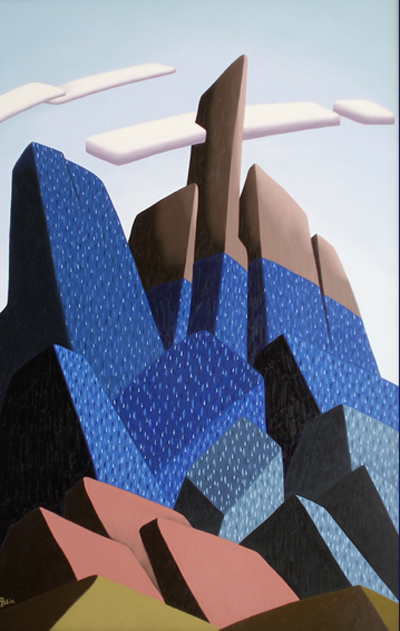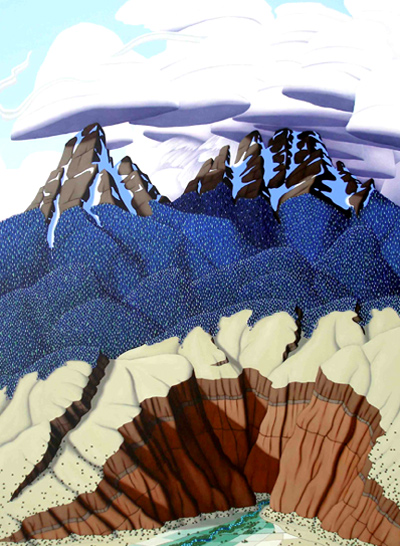By Donna Poulton
Sothebys (on the cover of the most recent New York action catalog) and major museums across the west. A month ago his painting Summer in the Mountains was estimated to sell at between $300,000 and $400,000 at the Santa Fe Art Auction and it sold for $632,500.
 Summer in the Mountains. Credit: AskArt
Summer in the Mountains. Credit: AskArt
And he is now featured in a new documentary by Josh Hassel titled Sandzén: Ecstasy of Color which aired on the PBS channel in Denver on 2 October 2011.
Sandzén studied in Stockholm, Sweden under Anders Zorn, and in Paris in the Atelier of Edmond-Francois Aman-Jean, who was closely associated with George Seurat. In 1894 he emigrated to Lindsborg, Kansas to teach art at Bethany College, where he stayed for the remainder of his life.
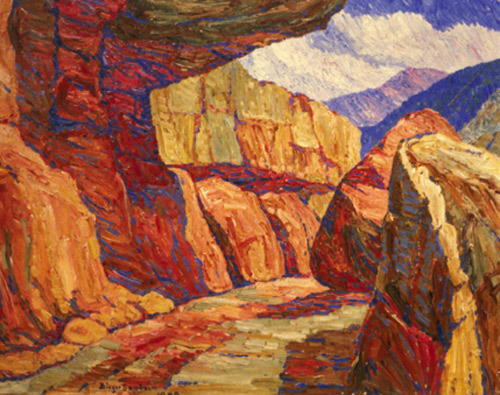 In Black Canyon. Credit: PSMuseum.org
In Black Canyon. Credit: PSMuseum.org
By the mid 1920s, his reputation as an artist and as an exceptional teacher was growing and Sandzén was often asked to teach summer school classes in other states such as Colorado, New Mexico, Michigan and Utah.
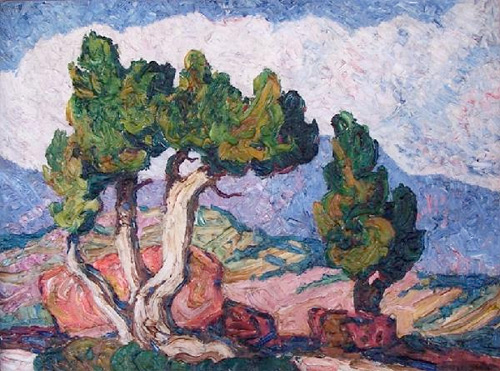 Colorado Cedars, Manitou, Colorado. Credit: Birger Sandzén Gallery
Colorado Cedars, Manitou, Colorado. Credit: Birger Sandzén Gallery
He wrote “All color in nature is stronger than anything one can possibly have on the palette. For instance, the shine of the moon-beam or the vividness of the newly opened flower. There can be no danger of exaggerating nature’s color.” His painting Moonrise in the Canyon, Moab, Utah, reveals the moon rising over the Colorado River with tall spires on either side of the river. He used short brush strokes for the sky and longer strokes for the rocks and water and analogous colors of red and blue for his palette.
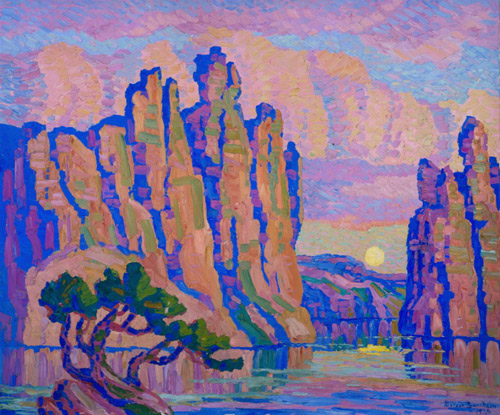 Moonrise in the Canyon, Moab, Utah. Credit: Donna Poulton and Vern Swanson Painters of Utah’s Canyons and Deserts
Moonrise in the Canyon, Moab, Utah. Credit: Donna Poulton and Vern Swanson Painters of Utah’s Canyons and Deserts
Whenever Sandzén was asked questions about his work, his answers were always those of a thoughtful and supportive teacher. Of an artist’s work, he once wrote:
… that one should be guided in both composition and use of color by the character of the landscape. There are western motifs out here, especially in a certain light (for example, in gray weather), which are distinguished by their majestic lines as in protruding rocks, rolling prairie and winding ravines. One should, when painting such motifs, first of all emphasize the rhythm and then sum up the color impression in a few large strokes…the color arrangement, however simple it may be, should support and enforce the lines. A false arrangement of color may completely destroy the rhythm. In the atmosphere in which the intensive light vibration and ring of color produce the great power of light, which is often the situation in the dry air of the Southwest—it is clear that a color technique should be used that emphasizes the most characteristic feature of the landscape. One must then use pure colors which refract each other, but which through distance assimilate for the eye-the so-called “optical” blending—since the usual blending on the palette, the “pigmented blending” is not intensive enough and does not “vibrate.”
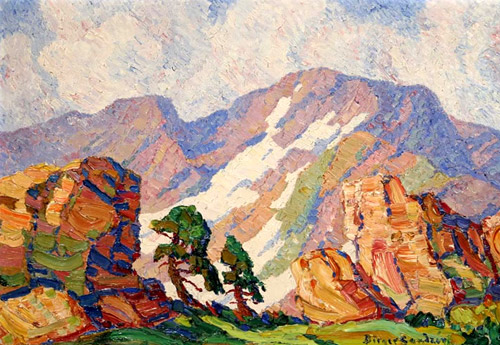 Heart Of The Rocky Mountains - Rocky Mountain National Park. Credit: AskArt
Heart Of The Rocky Mountains - Rocky Mountain National Park. Credit: AskArt
In the painting, Hour of Splendor, Bryce Canyon, Utah Sandzén used blue to evoke depth and tones of red and analogous colors to bring the spires forward. His loaded brush was used to sculpt the surreal landscape of Bryce Canyon. Remembering the desert, Sandzén once wrote “The great romantic wonderland of the Southwest with its rugged primitive grandeur, its scintillating light, its picturesque people. What a world of beauty waiting for interpretation in story, verse, color and line.”
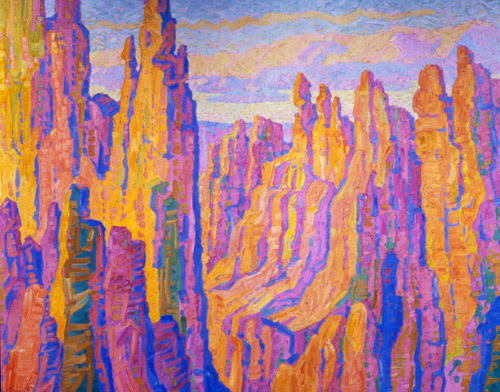 Hour of Splendor, Bryce Canyon, Utah. Credit: Donna Poulton and Vern Swanson Painters of Utah’s Canyons and Deserts
Hour of Splendor, Bryce Canyon, Utah. Credit: Donna Poulton and Vern Swanson Painters of Utah’s Canyons and Deserts
 Tuesday, March 20, 2012 at 9:58PM Tweet
Tuesday, March 20, 2012 at 9:58PM Tweet 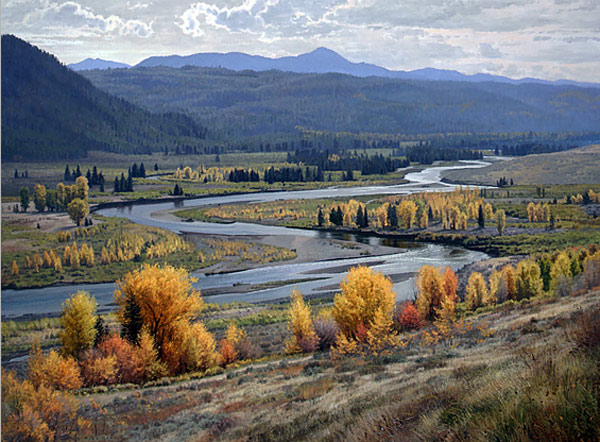 Jay Moore, View Down Buffalo Valley, c. 2011, oil on canvas 60 x 80 in. Credit: Crested Butte Plein Air Invitational
Jay Moore, View Down Buffalo Valley, c. 2011, oil on canvas 60 x 80 in. Credit: Crested Butte Plein Air Invitational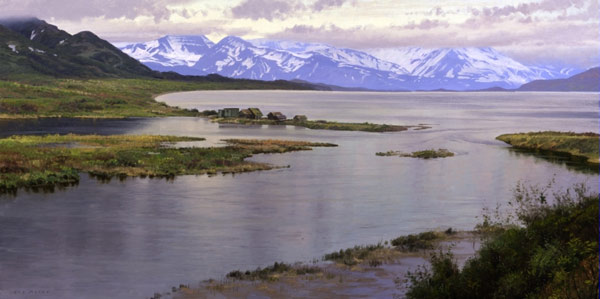 Lower Ugashik Lake, c. 2011, oil on canvas, 36 x 72 in. Credit: Jaymoorestudio.com
Lower Ugashik Lake, c. 2011, oil on canvas, 36 x 72 in. Credit: Jaymoorestudio.com
